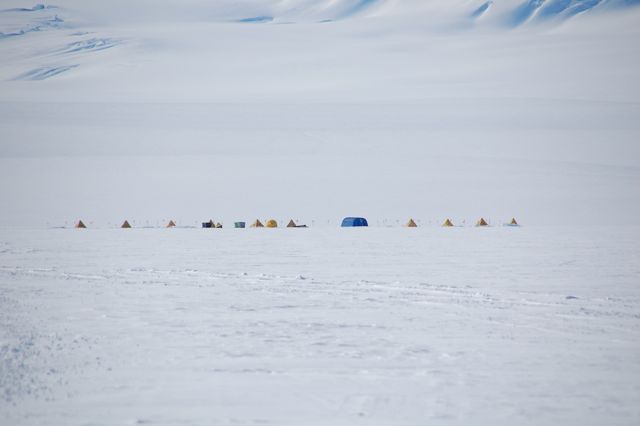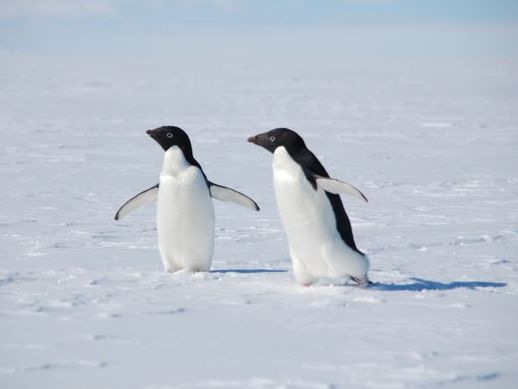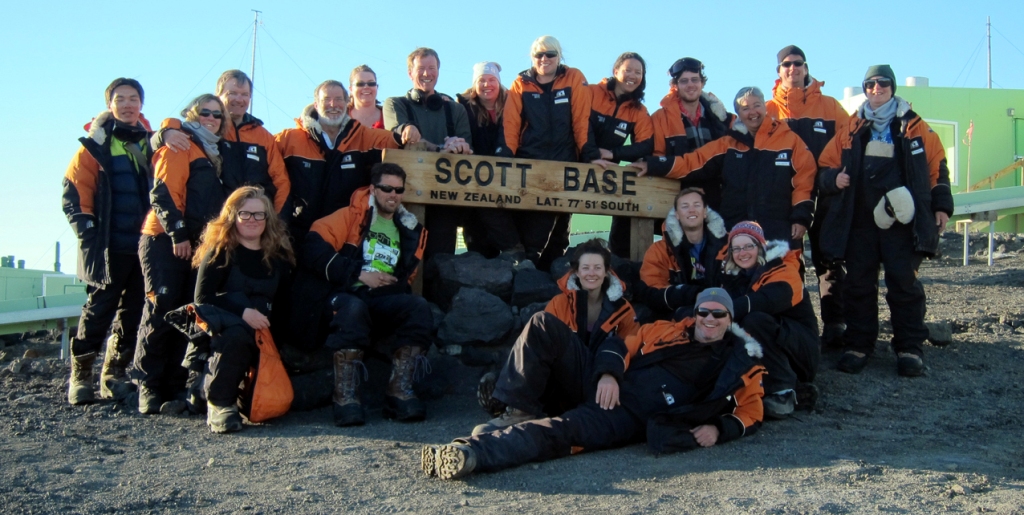Antarctica Field Trip - December 2011
Canterbury University Antarctic Studies Field Trip to Antarctica,
December 19 - 30, 2011
In November 2011 I went back to being a full time University student for the first time in over 38 years. Yikes. I joined 14 other students in the summer program to obtain the Postgraduate Certificate in Antarctic Studies from the University of Canterbury in Christchurch (see PCAS) . Included in the curriculum was a field trip to Antarctica.
The course is intended to give an overview of Antarctic issues and current science. The field trip gives a taste of what it would be like to be part of a team of scientists in a field encampment on the Ross ice shelf doing research on some aspect of the Antarctic environment.
We had 12 days in Antarctica, including 4 nights at the New Zealand headquarters, Scott Base, and 7 nights camping on the ice shelf. Following are some photos taken by me or the other students, and some words to try to describe what we did and saw.
After a few hours sleep and introductory briefing we we able to go exploring. Scott Base is only a short walk from the USA base at McMurdo. They are quite a contrast. Scott Base holds a maximum of 80 people (with 32 permanent staff) mostly as a transit station for groups headed into the field (like us). McMurdo is a village of 1100 people with many permanent staff. Scott Base is neat, tidy and runs to a very high environmental standard. McMurdo is not so tidy, but despite the clutter strives to keep the impact as low as possible.

After some field training and a morning spent getting all the gear together, we were "all systems go" to head out and set up up our field camp. We traveled by Hagglunds about 20km (12 miles) out onto the permanent Ross ice shelf into an area called Windless Bight by the early explorers. This was our home for the next 7 nights, staying in the same style of tents used by Captain Scott. They have proven to be the best design for this environment. Our camp was set out in a V shape so that each tent had a great view of Mount Erebus from the front door.
The snow covering the ice shelf is very deep (and under the snow the ice is about 200 meters thick). It has been compacted into a firm structure, so if you dig down a foot or so you can cut nice blocks for building. We excavated holes for kitchens and toilets. Very cozy.

Our day started with a morning meeting, and then we got on with the days activities. Two of the projects required excursions - one to conduct a seal census at a colony on the sea ice, and the other to investigation the geology at a volcanic outcrop, Castle Rock.
The other 2 science projects were to investigate the snow structure by digging into it and to record the weather.
We excavated 3 meters (10 feet) At that depth the temperature is about -20 Celsius (-4 F). The weather project involved the use of an automated weather station. Here is a graph of the temperatures we experienced.
Digging was a major activity around camp. In addition to building kitchens and toilets, we were required to sleep one night outside of the tent in a snow structure of some sort.
Most were simple caves, but Brian, built an igloo and Christel, Hanne and Pip excavated an ice palace. The activity must have attracted some Adelie penguins. We were a long way from the sea, so didn't expect to see any penguins. The ones that visited us must have been very lost.

We had Christmas at camp. A table was dug from the snow - with an arch to welcome everyone to the festivities. Father Christmas delivered dinner from Scott Base. Yum.
After a week on the ice shelf we returned to Scott Base. From there we made excursions to 2 of the historic huts on Ross Island. The Discovery hut is immediately adjacent to McMurdo. It was built in 1902 by Captain Scott for his first expedition and used by all subsequent expeditions.
The visit to the hut at Cape Evans required a helicopter trip as the sea ice was not safe for travel. This is the hut used as a base by Scott and his team for the "race" to the pole with Amundsen in 1911/12. You probably know the story of Scott making it to the pole only to discover that Amundsen had been their first, and then the 5 member party all dying on the return journey. The last 3 died only 11 miles from the supply cache (One Ton Depot) that would have saved their lives. This hut is rich with history, and is currently under conservation by the Antarctic Heritage Trust.
While at Scott Base we were able to follow a flagged route out through the pressure ridges on the sea ice. This is an area just in front of the base where the ice is pressed up against the land. The pressure forces the ice and snow up in a variety of sculptures.
Flags turn out to be a big feature of life on the ice. The red and green ones mark safe paths, and the black ones mark danger. They are especially important when the wind and snow reduce visibility down to a few meters.
That brought to an end our adventure. Now all I need to do is complete the reports so that I can pass the course!
